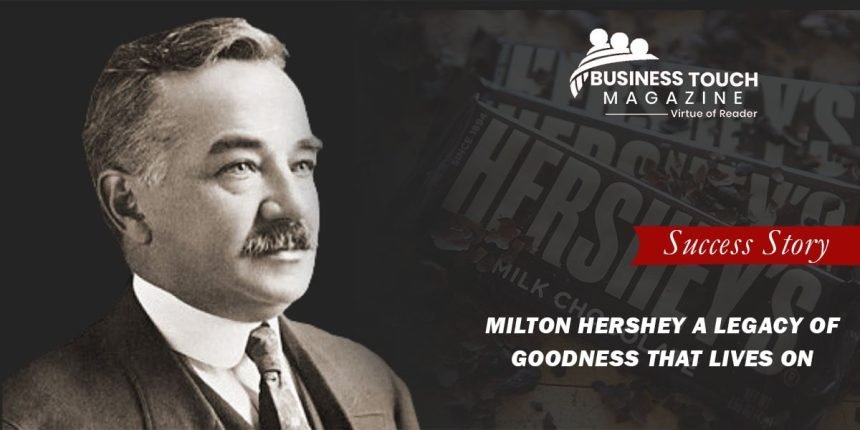Compassion, Selflessness and Purpose are the core principles that made Milton Hershey a big success. The strength of his character has never wavered, nor has it failed to enthral those around him. This same legacy drove the Hershey Company 125 years ago, and it’s a heritage that will continue to guide us for years to come.
In the spirit of Milton, a man who taught us that business is a matter of service, we put our money into companies that do good, lower our carbon footprint, improve the lives of communities, or give a better future for children throughout the globe. The biggest rewards may be found in acts of charity. And that one’s well-being is intertwined with the well-being of others around them.
A Story as Iconic as the Chocolate Bar
Milton Hershey was a confectioner, philanthropist, and inventor who built a name for himself. On the other hand, Milton did not suddenly become rich and famous, and his success did not come without a price.
It’s worth noting that his first two confectionery businesses were a resounding disaster. Milton’s hard work and skill didn’t pay off until his third enterprise. In the years that followed, Milton grew into a successful businessman and kind humanitarian who enriched the lives of many.
Milton Snavely Hershey had nothing by the time he was 26. He was an odd prospect for success since he had already had two enterprises collapse. In the end, Mr. Hershey, a man of unwavering beliefs and voracious curiosity, made his fortune by persisting and selling his caramel firm for $1 million so that he could focus only on the art of creating chocolate.
He started experimenting with boiling milk and sugar and cacao beans in an attempt to develop mass-produced milk chocolate using equipment acquired during the 1893 World’s Columbian Exposition in Chicago. His formula was developed over the course of a few years and, in 1903, he began construction on a new factory in the town named after him.
Milton Hershey’s idea of a business town was much more expansive than that of other industrialists of his day. People’s lives were enriched as a result of his efforts to build parks, schools, public transit, and infrastructure. His riches was accompanied by a strong feeling of social duty and altruistic tendencies.
They started a school for orphaned boys after realizing they couldn’t have children of their own. For him, happiness was measured by how much he was able to make people happy, not by how much money he had. Milton Hershey donated his whole wealth to the school he and Catherine founded in 1918, long before he died.
The Struggle
In New York, he tried selling chocolates, but it didn’t work out either. As a result, he returned to Pennsylvania and established a business selling caramels produced with fresh milk. He sold it for $1,000,000 after operating it for more than twenty years, which was a significant sum at the time. Because he anticipated that chocolate would be in high demand for a long time, he decided to start making it himself.
He started work on his hometown’s new manufacturing facility. He made a lot of money here because he could readily find employees who would work for very little money. The popularity of the milk chocolate bars led to the company’s growth. In 1896, he constructed a new milk processing factory and, three years later, he developed the now-famous ‘Hershey Process.’ In 1907, Hershey’s Kiss, a little hill-shaped chocolate, was introduced. After a big success in North America, this was rolled out throughout the continent.
As a result, almost 80 million bars of delicious chocolate are manufactured every day to meet global demand.
As time passed, they started launching more and more cutting-edge items. Mr. Goodbar came out in 1925, Hershey’s syrup in 1926, and Krackel bars in 1938, all of which were debuted in the same year. Harry Reese, a former Hershey’s employee, went on to create a line of candy in 1925 that quickly became popular. The ‘Peanut Butter Cup’ was the company’s best-selling product in 1956, with annual sales of almost $14 million. After his death in 1956, Hershey’s purchased his firm for only $23 million, which was a significant financial gain.




